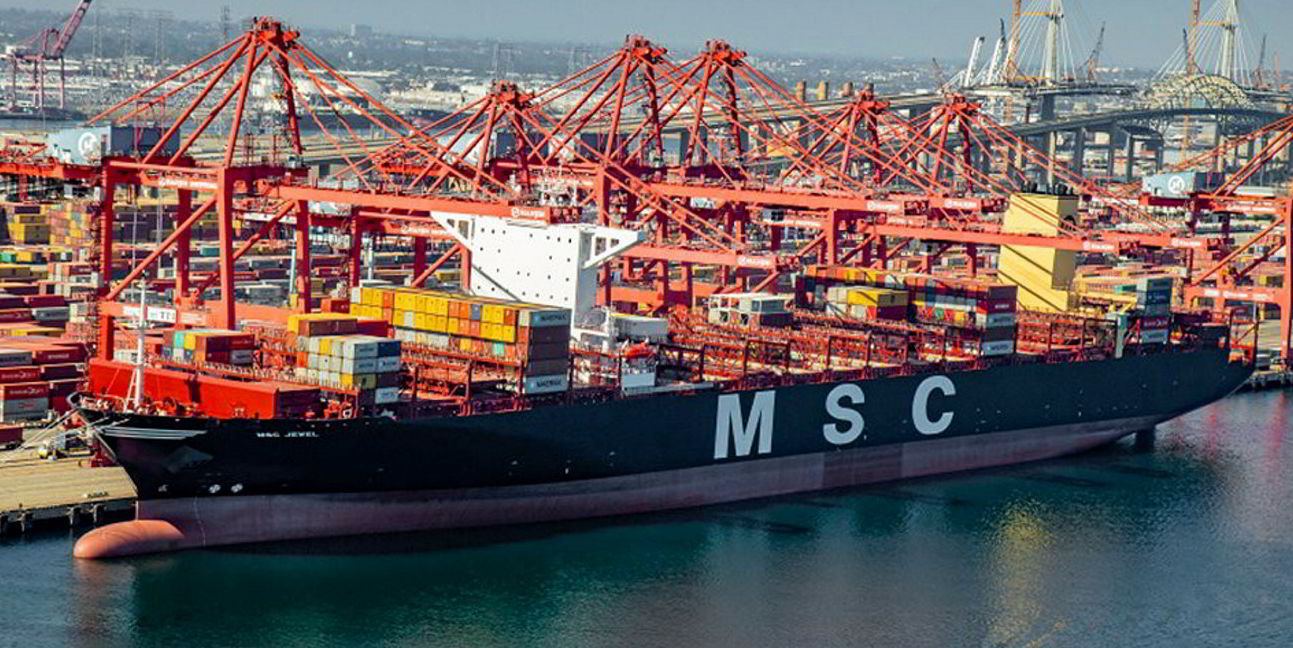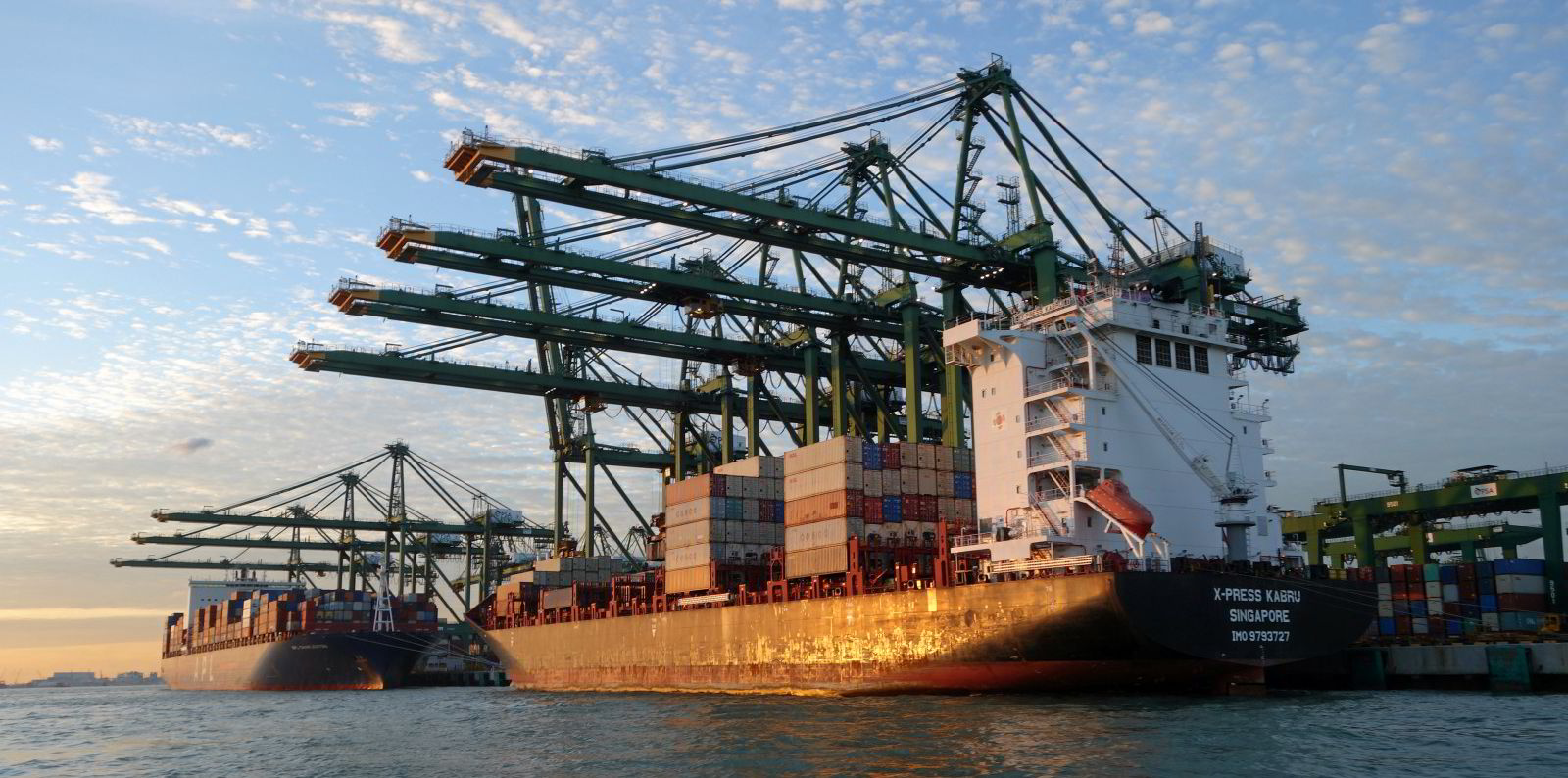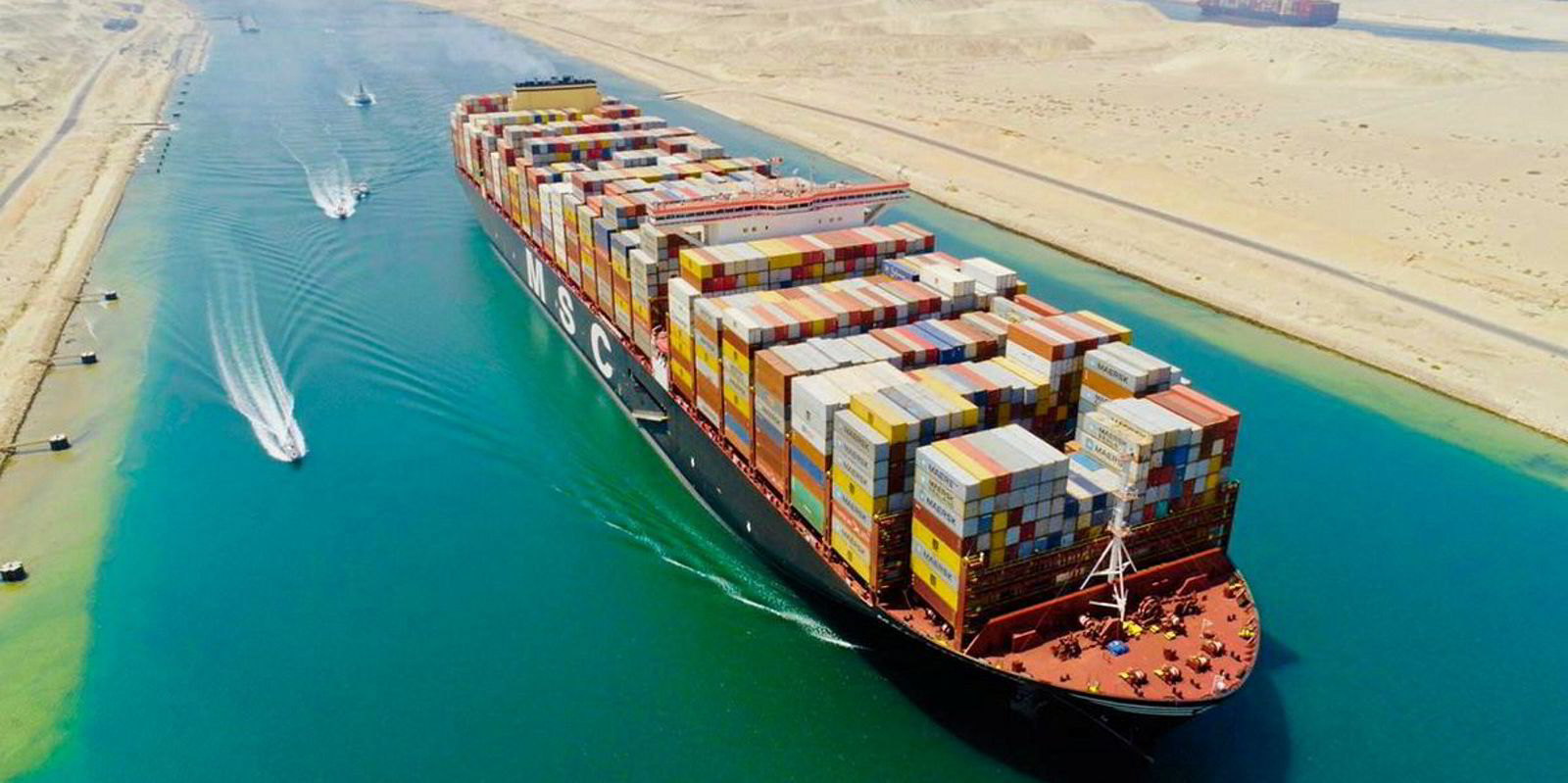The container shipping industry faces “an array of risks” that could end the good times sooner than many expect, according to AlixPartners.
The curtain could fall in 2023 as freight volumes and shipping capacity come back into balance, the New York consultancy warned.
Its “2022 Container Shipping Outlook” puts the combined Ebit of carriers it surveyed last year at $82bn.
That is up 387% from 2020, which was already a banner year, and 16 times the pre-pandemic year of 2019.
But in a study, “More money, more problems”, the firm suggests that companies are keeping more than half the money they have earned in reserve, partly because of difficult choices about future fuel requirements.
“Carriers are weighing how to best invest their suddenly ample cash hoards and prepare for the inevitable regression to the mean,” AlixPartners explained.
Triggers of disruption
Carriers resumed ordering tonnage last year, and the first of those vessels will arrive in 2023.
This is one of several “triggers of disruption” that could bring an early end to the liner shipping boom.
The ships will be adding to capacity just as trade volumes may be declining.
“While liners are making the most of their current prosperity, the good times will come to an end some day — and possibly sooner than many expect,” AlixPartners wrote.
The orderbook more than doubled in 2021 from 2020’s record low.
“Even if lines heed the lessons of 2006 and 2007 and limit their appetites for new tonnage, the supply of vessels is on the rise and will likely increase 23% by 2025, exerting downward pressure on rates,” it said.
Demand for container shipping could also be dropping, the study warned.
Falling corporate profits will deter businesses from manufacturing or importing some lower-value goods, “and earnings may already be on the downswing”.
Sky-high consumer spending and demand also show signs of returning to earth in 2022, and there will be a phaseout of government stimulus and economic relief payments to US and European consumers.

The regionalisation of supply chains and the drift towards nearshoring and reshoring means some businesses will have less need for ocean shipping.
Hoarding the cash
“Carriers are deploying their massive cash hoards cautiously as if bracing for another 10-year slump,” the analyst said.
“There’s good reason for caution. When the cycle turns, shippers will have little inclination to offer carriers concessions or refrain from demanding rate relief.”
Carriers have directed more than 26% of their earnings towards debt and equity holders, compared with less than 19% towards their operations, AlixPartners said.
The remaining 55% of their powder is being kept dry as they reckon up the cost of converting their existing vessels to dual fuel use.
“The issue of fuel is a vexing one for liners, which must choose from many dual-fuel options for their newbuilds.”
The choice of LNG or methanol “amounts to a gigantic bet on technology and infrastructure”, the firm said. “The wrong bet will be hugely expensive and difficult to rectify.”
Carriers will also have to reserve capital to retrofit their existing fleets for dual-fuel consumption once the industry reaches consensus around a common standard, it said.
Money problems
The study suggests that container shipping “never saw anything like 2021 — posting results unprecedented in the history of the industry”.
Combined revenue topped $265bn — up 46% from 2020 and up 55% from 2019.
“And nearly all of the revenue gain fell straight to the bottom line,” it said.
AlixPartners suggested that carriers have broken out of the recurring cycle of extreme boom and bust.
Liner operators are embarking on what appears to be another year of strong revenue and earnings growth.
Recent rate negotiations demonstrated that liner operators “are taking full advantage of their pricing leverage while it lasts”.
Service levels offered by operators have, however, deteriorated.
“Container shipping executives may want to bear in mind that in their relationships with customers, just as in their investment allocations, the decisions they make today will reverberate for years to come,” AlixPartners said.
“More money does indeed bring problems of its own.”







